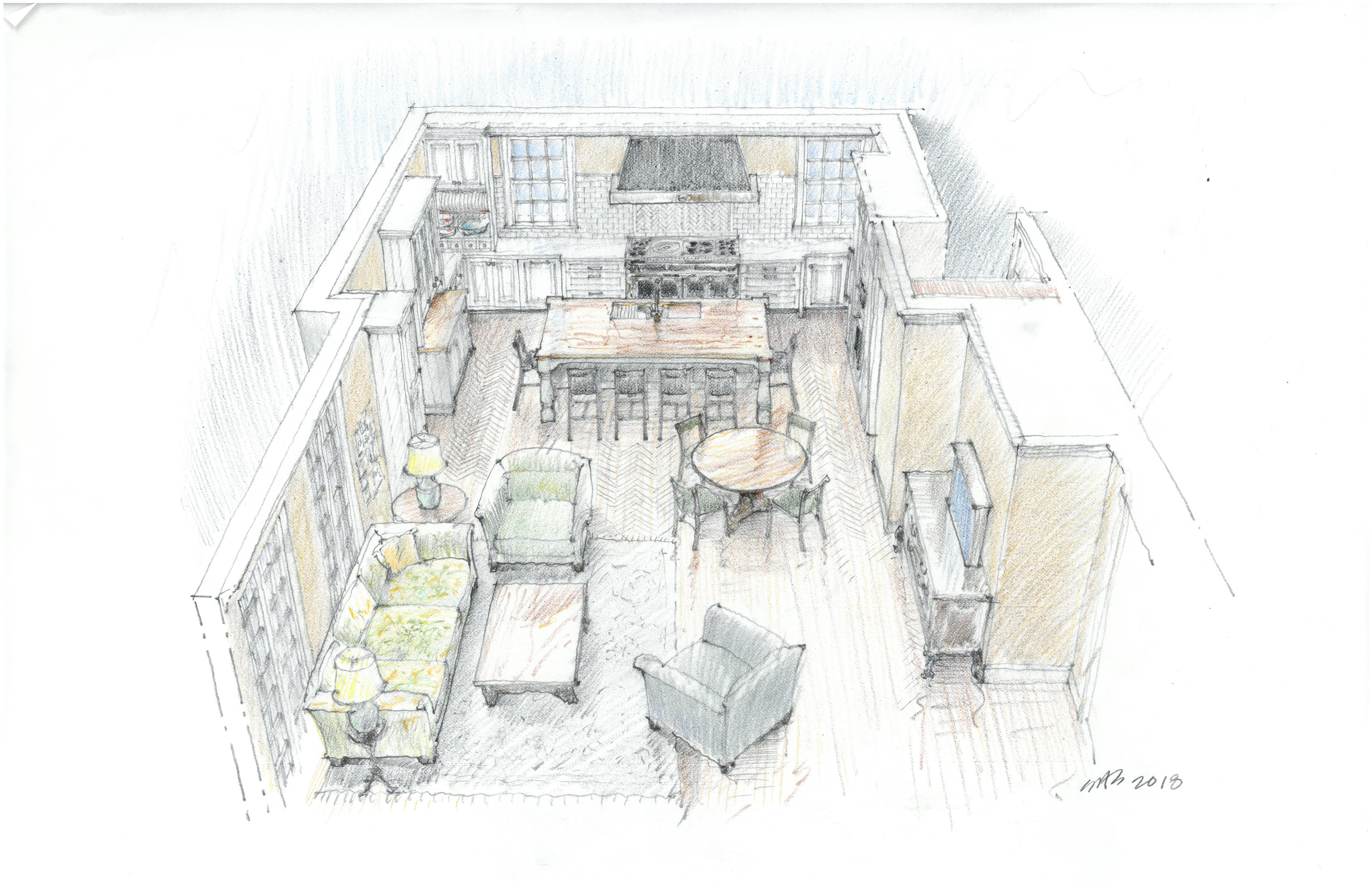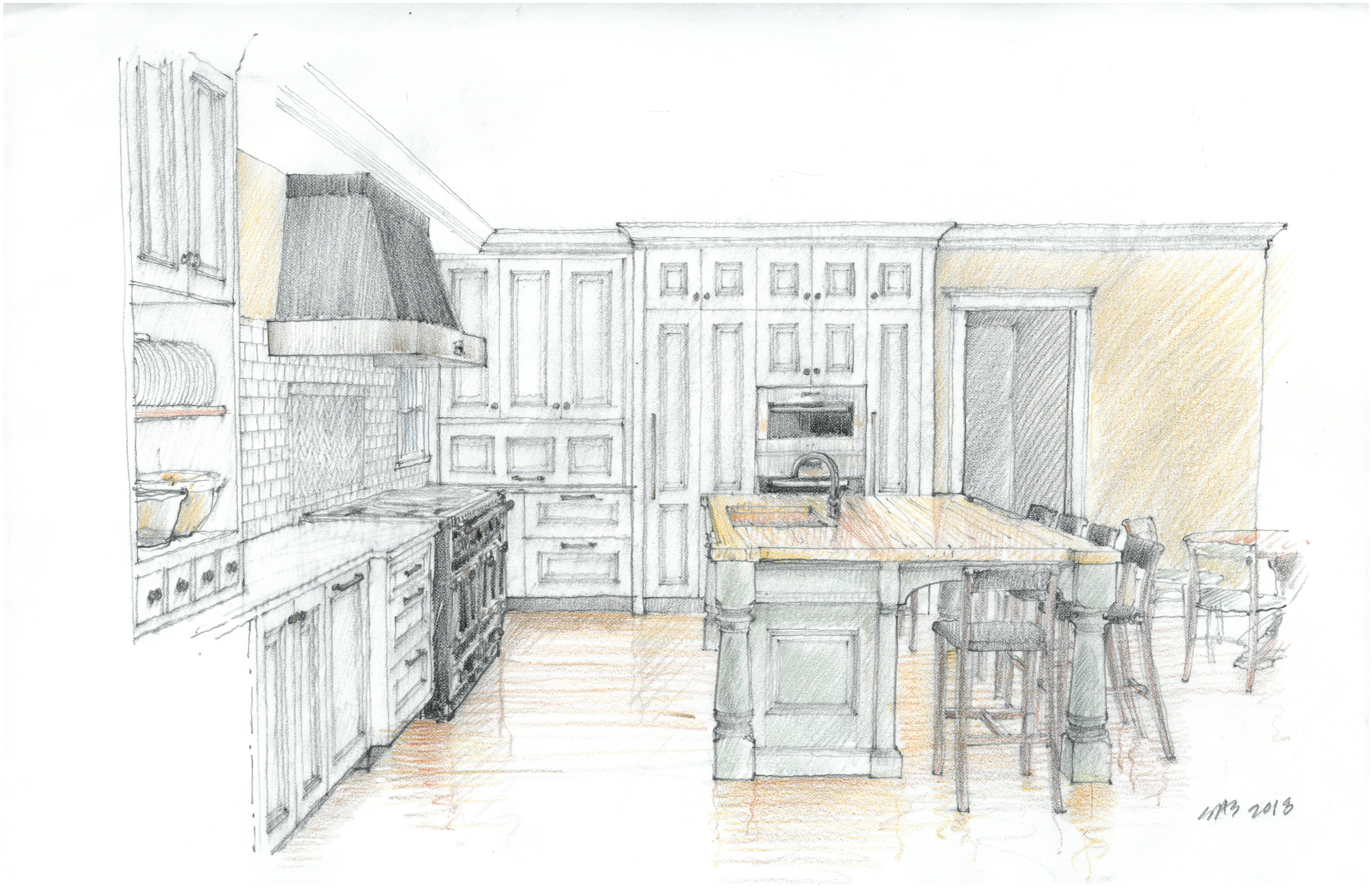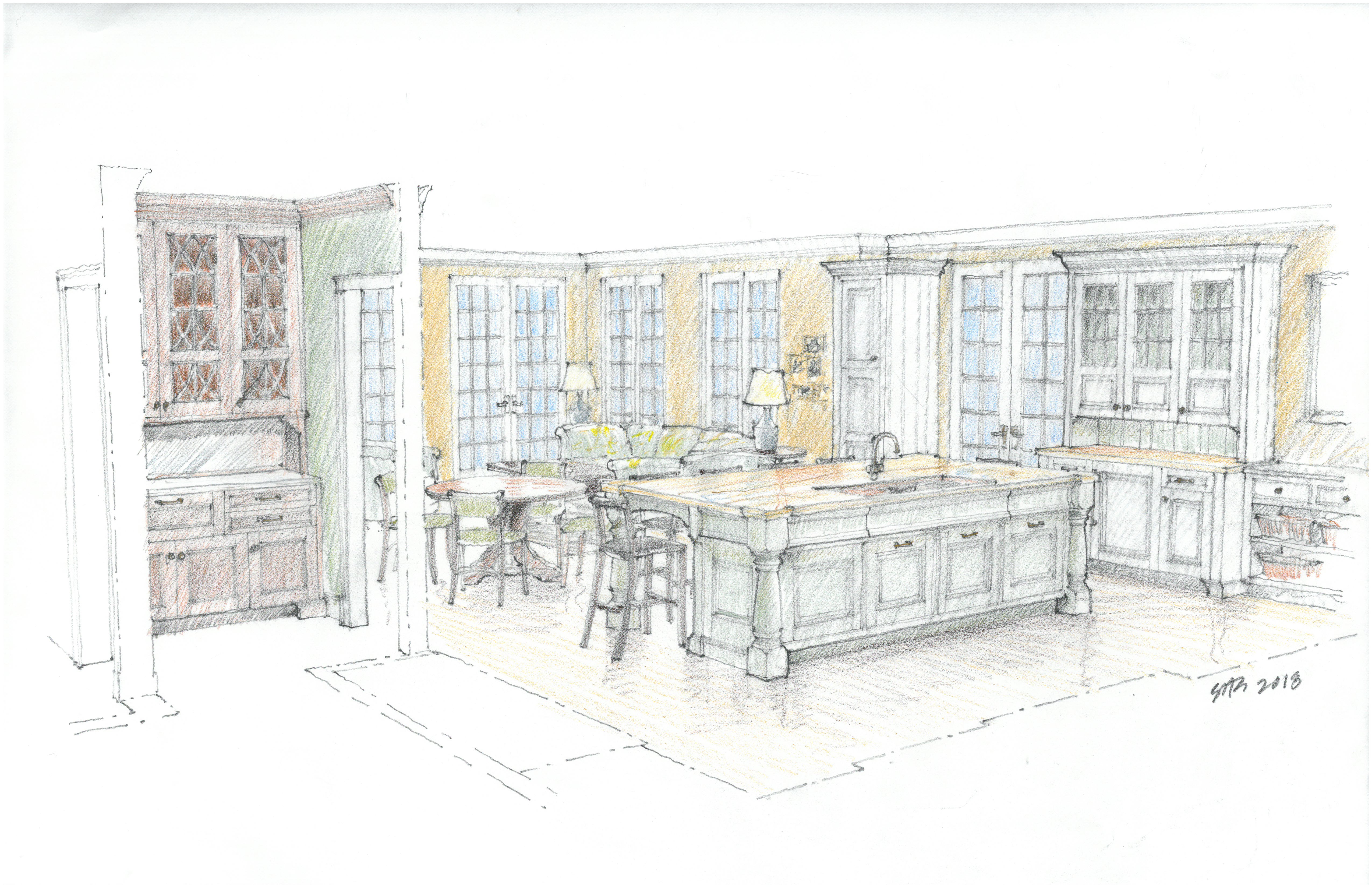Computer modeling and rendering have transformed the design industry at most every level. In the early 2000s, I made myself sit up late at night learning from technical manuals, knowing that was where the world was headed, and that it would help keep me from sliding into professional obsolescence. Still, I never gave up drawing by hand.
Today's designers can produce 3D visualizations of kitchens, choosing facsimiles of cabinet styles and finishes, countertop and flooring materials, appliances, furniture, and lighting from drop down menus embedded in easy to use design software. The more sophisticated programs can yield digital models and renderings of nearly photo-realistic quality, and even virtual reality walk throughs. Not so long ago, such results were only available to those with considerable professional training and experience. Nowadays, with a plethora of powerful programs, very little skill is required. Hand rendering seems threatened with extinction.
I'm an AutoCAD user, and with over 25 years of it under my belt, I'm pretty adept. Beyond the concept sketching phase of my work, it's become indispensable, whether I'm designing a new product series, a one - off furniture piece, or a room. I find its rendering tools useful in form and space studies, but when I produce design manuals and presentation renderings, they're almost always drawn by hand, using hardline drawings plotted from my digital models as a guide for accuracy. It's a lot of extra work, but these hand renderings have an evocative, emotional quality that I've found impossible to achieve any other way.
Call me old school, but drawing is still something I do by hand. Sometimes it almost feels like making art.


 Kitchen design project for a residence in Washington, DC with Jennifer Gilmer Kitchen & Bath, Ltd.
Kitchen design project for a residence in Washington, DC with Jennifer Gilmer Kitchen & Bath, Ltd.